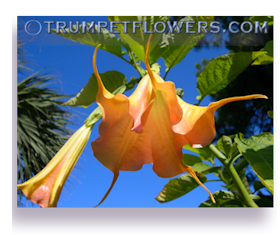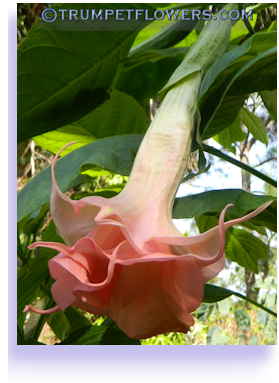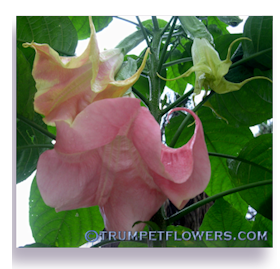Foliar Feeding
Garden Plants
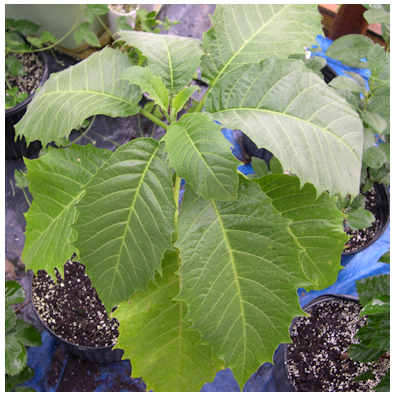 Foliar Feeding is a beautiful thing. If you've never used this method to care for your plants, you are going to be cheerfully surprised and pleased with the astounding results that foliar feeding achieves. I'll never go back to just straight feeding of my plants by the root system only. After doing some reading and studying on my own, I've found out that plants take up to as much as 70 percent of their micronutrients through the leaf surfaces and undersides to begin with. What other reasons would one need to begin using this fantastic and fast moving method to superize their plants?
Foliar Feeding is a beautiful thing. If you've never used this method to care for your plants, you are going to be cheerfully surprised and pleased with the astounding results that foliar feeding achieves. I'll never go back to just straight feeding of my plants by the root system only. After doing some reading and studying on my own, I've found out that plants take up to as much as 70 percent of their micronutrients through the leaf surfaces and undersides to begin with. What other reasons would one need to begin using this fantastic and fast moving method to superize their plants?
Foliar feeding strengthens weak plants. It can make the difference between losing a valued seedling and regaining it. They become more vigorous, are less susceptible to disease and virus, and also more pest resistant when foliar∼fed. I see no drawbacks to using foliar feeding to keep your treasured beauties, be it your prized vegetable crop, to a stunning orchid collection, healthy and thriving.
Foliar feeding can be done on small or large scale. The benefits can be seen almost immediately. Start by finding an organic foliar feeding mixture. Spray times are also important. All plants, including cacti and succulents, are burned if wetted in temperatures rising over 80°. With this knowledge, one should know great times to do this are either very early morning during the dog days of summer, or even better, evenings after the temperatures begin to cool and shade has returned to the area where the plant(s) are.
Rain is a deterrent to foliar feeding. Who wants to spray an expensive, time consuming foliar feeder onto their treasured plants, only to have the rains wash it away within hours? I suggest you check your local radar/forecasts, and try to time the feeding on an evening that has been previously forecast as rain∼free, as well as into the preceding next two days for full benefits to the plant.
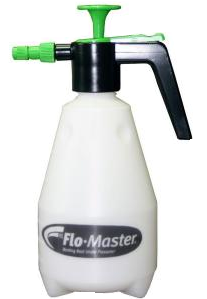 The hands down best hand-held sprayer I have found is made by Flo-Master and can be found at Home Depot for around 7.00 or 8.00 dollars. It is a pump style pressure sprayer, so you just pump the green cap shown in the picture after filling to the liquid fill line (It holds 1.75 liters, or 56 ounces) and you're good to go. The nozzle is adjustable for different spray streams, and it even has a locking mechanism that lifts up and then you don't have to hold the very light trigger to continue spraying. I love this thing! For years I bought those cheap spray bottles, always looking for a better one, but they didn't last much longer. Finally I ran into this one. A great little investment. Since the labor is less intensive, and it holds a good amount of liquid; you'll be more inclined to foliar feed your plants too.
The hands down best hand-held sprayer I have found is made by Flo-Master and can be found at Home Depot for around 7.00 or 8.00 dollars. It is a pump style pressure sprayer, so you just pump the green cap shown in the picture after filling to the liquid fill line (It holds 1.75 liters, or 56 ounces) and you're good to go. The nozzle is adjustable for different spray streams, and it even has a locking mechanism that lifts up and then you don't have to hold the very light trigger to continue spraying. I love this thing! For years I bought those cheap spray bottles, always looking for a better one, but they didn't last much longer. Finally I ran into this one. A great little investment. Since the labor is less intensive, and it holds a good amount of liquid; you'll be more inclined to foliar feed your plants too.
I have my own mix I make to foliar feed. It's been adapted from a basic brugmansia recipe that was done by those hybridizers far in front of me. It contains about 15 different ingredients, and I've been honing it for perfection on my brugs for the last couple of years, but the basic recipe has been around a long time.
The below concentrate is also great for roses, justicia, clerodendrum, bauhinia, cassia and hibiscus. If you see the list extensive, it is. It is also costly. But if you're up to it, it is a fantastic foliar spray concentrate to make. If you'd rather buy the mix below already made up, I have it right here. My mixture contains almost no water, (only 2 cups to the entire jug) so is concentrated. I also always add the optional ingredients.
Brugmansia tea Concentrate
- 1 teaspoon peroxide
- 1 - 12 oz can of dark beer
- 1/2 cup household clear ammonia
- 1/4 cup Azomite Dust
- 1/4 cup Epsom salt
- 15 drops Tea Tree Oil
- 4 drops Superthrive liquid (optional)
- 1/2 white aspirin tablet, crushed
- 1 Vitamin B tablet, crushed
- 1 calcium tablet, crushed
- 1/4 cup unsulphured blackstrap molasses
- 1/4 cup powdered or liquid Kelp
- 4 tbsp. Miracle Gro Tomato Fertilizer
- 1 teaspoon Humic acid
- 2 teaspoons Lemon dish soap liquid
- Water
Using a clean one gallon milk jug, add everything except the water. When everything is in the jug, fill the rest with clean water, filtered rain water being the best. Use this for foliar feeding at rate of 7 or 8 drops per 1/2 gallon or add 2 tablespoons to a one gallon container of water for direct fertilizing. Same mixture for both. (Mine you purchase is more concentrated, so only add 2 drops per half gallon for foliar feed spraying, or 3/4 Tbsp. per gallon for watering as a soil drench.)
You can spray away, trying to get the undersides of the leaves if at all possible. There are more cells on the undersides of the leaves that can use this foliar feeding mix than on leaf surface. You can filter rainwater by placing a large funnel over an empty, clean milk jug and then putting a paper coffee filter in the funnel. Pour the rainwater through it. Use this water to fill your spray bottle.
Use once monthly, or once a week if you want faster growth. Leaves will be stronger, bigger, and the trunk and root system overall. Buds will set better, and more of them. Go for it!
SeaCrop Kelp Powder is excellent to use in the Brugmansia Tea mix or it can stand alone when you don't have the time or money to make the tea. You can buy it at BGI.
Azomite is also an excellent additive to any good foliar feeding mix. It contains 67 trace minerals, and is a perfect compliment to SeaCrop kelp powder. It's also organic. Click the link in recipe above to read reviews on Amazon. There are hundreds of them and mostly all positive. Only bad reviews were a broken bag in shipment, and the fact that it easily absorbs other scents, so store sealed and away from gases, fumes, etc.
Tags: foliar feed your plants,, brugmansia blooms, foliar feed, foliar feeding, leaf feed plants, brugmansia tea, flo-master hand held pressure sprayer,

